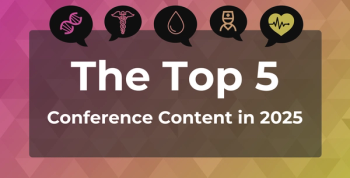
The Income–Health Conundrum: Something Old, Something New
It seems intuitive that people with higher incomes enjoy better health. But for researchers, this general relationship raises many questions, not the least of which relates to “causality.â€
This article was written by Jon Christianson, PhD, Medica Research Institute senior fellow and James A. Hamilton chair in health policy and management at the School of Public Health at the University of Minnesota.
Within a recent 6-month period, 2 seemingly unrelated articles in The New York Times caught my eye.
One reported on health services researchers at the University of Wisconsin studying the relationship between income disparities and health across geographic areas in the United States.1 In an earlier piece, the paper covered the award of the Nobel Prize in Economic Sciences to Angus Deaton, a faculty member at Princeton University. According to the Times, Deaton received the Nobel for work on individual consumption behavior and its implications for stimulating economic progress in underdeveloped countries.2
In other work, not noted in the Times article, Deaton has weighed in on the relationship between income and health. His Health Affairs article on the topic was one of the most interesting and intellectually provocative published during my 17 years on the journal’s editorial board.3
Deaton’s Health Affairs article benefited from, and extended, a substantial body of research on the relationship between income and health. After a brief lull, the topic has become popular again in mainstream economics and interdisciplinary health services research.
President Barack Obama’s 2014 State of the Union address4 and statements by candidates in this past election cycle have raised the profile of income disparities in the United States and their implications for a variety of important societal questions, but not specifically for health. This is understandable, as I explain below, because the income—health relationship is not easily reduced to a political soundbite despite (or because of?) the attention it has received for decades in academic and policy wonk circles.
What Do We Know—or Think We Know—About the Income—Health Relationship?
It seems intuitive that people with higher incomes enjoy better health. In fact, data do support an empirical relationship between income and health, although things are inevitably more complicated than they first appear. In their very accessible overview of the topic, Evans, Wolfe and Adler observe that “the existence of a positive relationship between socio-economic status and health has been well established; individuals who have been better off financially tend to have better health”5 (page 3). And, at every income level, moving up to a higher income is associated with better health, although the size of the health gain is less at higher levels of income.6
For researchers, this general relationship raises many questions, not the least of which relates to “causality.” That is, does having a higher income lead to better health, or does better health lead to a higher income? Or does causality run both ways?
There are many reasons that higher income may lead to better health. People with higher incomes typically have more comprehensive health insurance that provides them with better financial access to medical care. And they have the financial means to enjoy better nutrition, purchase health club memberships, live in safer neighborhoods, and so forth.7
On the other hand, people in poor health have more limited income opportunities than those in robust health. This relationship may manifest itself more clearly over time. For example, children in poor health may have more difficulty learning in their early years, resulting in lower incomes later in life.
What Complicates Our Understanding of the Income—Health Relationship?
There may be other factors that affect both income and health levels. That wise producer of pithy sayings, Benjamin Franklin, raised this possibility when he proclaimed, “Early to bed, early to rise makes a man healthy, wealthy, and wise.” Apparently, he felt that the timing of sleep could affect both health and incomes. Without considering this, one might erroneously conclude that higher incomes caused better health, or vice versa.
This idea suggests that it can be challenging to tease out the relationship between income and health. For example, education can affect health by influencing the degree to which people understand the relationships between their personal behaviors and health. Education also can affect income, with better-educated people securing higher-paying jobs. Education certainly seems a more plausible influence than the scheduling of sleep, but there are factors in addition to education that are also plausible.
Any attempt to understand the relationship between health and income would need to take these other factors into account, and many research studies have devoted a great deal of effort trying to do exactly that. A review of this literature concludes that “many longitudinal studies show that economic resources predict health or its proximate determinants, even after adjustment for education” and further that “several researchers have observed health effects of income/wealth even after adjusting for many other relevant factors.”8 So, empirical data and analyses support the notion that a relationship between income and health exists, in the direction expected, at the individual level. But the issue of causation remains a bit murkier.9
What About Population Health?
The work of researchers at the University of Wisconsin described in The New York Times1 picked up a different thread of the income—health discussion. It’s one that also has a lengthy history: Are income disparities by themselves associated with poorer health? Put another way, in 2 different geographic areas with the same average incomes and similar population characteristics, would you expect measures of population health status to be worse in the area with the greater income disparity?
This question has been addressed using different measures of income disparity and health status. In some studies, researchers found that health status was associated with the degree of income disparity in a geographic area, even when controlling for average income and differences in other community characteristics.
Explanations for this empirical finding are somewhat speculative. One possibility, as characterized by Deaton, is “that high levels of income inequality are associated with low levels of social support and cohesion and so sicken everyone, rich and poor alike.” At the time of the Health Affairs article, Deaton was skeptical of the empirical relationship, calling it “spurious,” and arguing that “there is no relationship between income inequality and mortality once we control for the racial composition of American states and cities. More generally, inequality almost certainly affects health, but income inequality is not the key”3.
Since then, much research has attempted to control for factors that could affect the relationship. The University of Wisconsin work is a recent example. These authors used potential life years lost as a measure of health, combined with a different approach to measuring income disparity. They found an income disparity effect even after controlling for racial composition of counties and other factors. Nevertheless, the mechanism by which income disparities in geographic areas, by themselves, affect population health status deserves more attention. Is it that greater disparity results in lower levels of “social support and cohesion” and therefore health, or is it something else?
What Does This Mean for Health Policy?
The implications for health policy of the income—health relationship, as observed at the individual level, have been debated since the general nature of that relationship became widely accepted. The key empirical point is that the relationship “flattens” at higher levels of income, but never goes away entirely. This means that if a specified amount of income could be “transferred” from people at higher income levels to those at lower-income levels, there would be some health loss at higher levels, but a greater health gain for people at lower-income levels.10 Presumably the average health of the population would increase. This may be a more efficient way to improve health in low-income populations than programs directed at improving access to medical services. Deaton chimes in on this point, suggesting that “a policy of income provision to the poor may well be more effective than spending the same amount of public funds on a weak health care delivery system.”3 (page 28)
In practice, it is typical for policies in this area to be less direct with respect to income redistribution. For example, the Affordable Care Act (ACA) eventually would redistribute income by providing income-based subsidies for the purchase of health insurance by lower income Americans. Having health insurance will presumably lead to better access to health services and ultimately better health. However, among other things, this idea assumes that people who enroll in ACA insurance plans with high deductibles will increase the use of the medical care services that improve health, as it is typically measured.
Even if public policy focuses on direct income transfers as an important means to improve the health of the poor, execution can be an issue. Again, Ben Franklin has an appropriate pithy saying: “Well done is better than well said.” That is, it would depend on how the transfer was accomplished and, in particular, how much income actually reached lower-income individuals, after accounting for program costs, administration, and design.
Research by Larrimore9 addresses this question, as the title of his article implies: “Does a Higher Income Have Positive Health Effects? Using the Earned Income Tax Credit to Explore the Income—Health Gradient.” Using a “natural experiment” regarding variations in the generosity of Earned Income Tax Credits, he states, “I found only limited support for the theory that the relationship between income and morbidity is derived from shifts in income.” But he notes that he examined only short-term effects.
This brings us back to Deaton, who would probably agree with Benjamin Franklin. In Deaton’s book The Great Escape: Health, Wealth and the Origins of Inequality, he cautions that the institutions through which foreign aid flows to lower-income countries tend to enrich high-income people in those countries, with the aid often not reaching its intended beneficiaries.11,12 While this is a very different context, the warning seems clear enough: just because there is intent to make income transfers that have beneficial health effects for low-income populations does not mean that this outcome actually occurs.
So, the real world is messy, as we all know, and research in the real world does not always yield definitive answers to important questions. Nevertheless, looking forward, we will likely see more attention devoted to the consequences of income inequality in America and the world. And there will likely be increased demand for information that helps us to understand the possible consequences of different policies to address income disparities. As researchers continue to clarify the income—health relationship, health impacts hopefully will play a larger role in that discussion. Woolf and colleagues aptly point out that: “As our country debates about the best policies to help the middle class and the poor, it is important to remember that economic and social policies are health policies, in that they affect life expectancy, disease rates, and health care costs for all Americans.”7
References
- Sanger-Katz, M. (2015). Income Inequality: It's Also Bad for Your Health, The New York Times. Retrieved from www.nytimes.com/2015/03/31/upshot/income-inequality-its-also-bad-for-your-health.html
- Appelbaum, B. (2015, Oct 12). Nobel in Economics Given to Angus Deaton for Studies of Consumption, The New York Times. Retrieved from http://www.nytimes.com/2015/10/13/business/angus-deaton-nobel-economics.html?_r=0
- Deaton, A. (2002). Policy Implications of the Gradient of Health and Wealth. Health Aff (Millwood), 21. Retrieved from healthaffairs.org website: http://content.healthaffairs.org/content/21/2/13.full.pdf+html
- The Economist. (2014). Barack Obama's state-of-the-union speech: Deal or no deal? American politics may be becoming a bit less dysfunctional. The Economist.
- Evans, W., Wolfe, B., & Adler, N. The Income-Health Gradient. Retrieved from http://www.irp.wisc.edu/publications/focus/pdfs/foc301b.pdf
- Subramanian, S. V., & Kawachi, I. (2004). Income inequality and health: what have we learned so far? [Meta-Analysis]. Epidemiol Rev, 26, 78-91. doi: 10.1093/epirev/mxh003
- Woolf, S. H., Aron, L., Dubay, L., Simon, S. M., Zimmerman, E., & Luk, K. X. (2015). How are Income and Wealth Linked to Health and Longevity? Income and Health Initiative: Brief One. Retrieved from www.urban.org website: http://www.urban.org/research/publication/how-are-income-and-wealth-linked-health-and-longevity
- Braveman, P., Egerter, S., & Williams, D. R. (2011). The social determinants of health: coming of age. [Review]. Annu Rev Public Health, 32, 381-398. doi: 10.1146/annurev-publhealth-031210-101218
- Larrimore, J. (2011). Does a Higher Income Have Positive Health Effects? Using the Earned Income Tax Credit to Explore the Income-Health Gradient. The Milbank Quarterly. Retrieved from www.ncbi.nlm.nih.gov website: http://www.ncbi.nlm.nih.gov/pubmed/22188352
- Marmot, M. (2002). The influence of income on health: views of an epidemiologist. [Research Support, Non-U.S. Gov't Review]. Health Aff (Millwood), 21(2), 31-46.
- Reinhardt, U. E. (2013). Wealth, Health and Inequality, The New York Times. Retrieved from http://economix.blogs.nytimes.com/2013/11/08/wealth-health-and-inequality/?_r=0
- The Economist. (2013, Oct 12). Economic Inequality: In sickness and in health. The Economist.
Newsletter
Stay ahead of policy, cost, and value—subscribe to AJMC for expert insights at the intersection of clinical care and health economics.









































